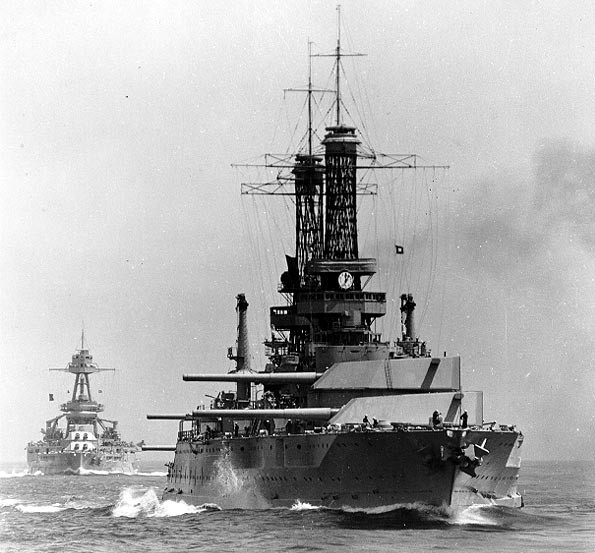Welcome to the second installment of Line Ahead! During the first post of this series, I mentioned that one of my entering assumptions was that naval gaming is a unique sub-genre of war gaming. At the time, I was willing to leave it at that, but now I would like to explore that assumption a little more deeply. In my mind, there are two basic categories that tend to distinguish naval games from land or air based games. The first category thematic, those characteristics that give a game a naval feel. The second category is mechanical, or those features that tend to make naval games play differently than others.
Thematic Characteristics
The most fundamental difference between naval games and other war games is that naval games use ships of some kind. This may seem obvious, but there are some very interesting implications involved here. First and foremost, it means that the lowest actionable unit on the table is going to be a ship of some kind, instead of an individual soldier. This immediately “zooms out” on the level of scale, as we are no longer talking about a handful of individual people but hundreds or even thousands instead, all contained in vessels of some sort. Second, because we can not see individual sailors in most cases, naval games tend to be dominated by the physical and technological aspects of the minis used. To put it another way, in a naval game the tendency will be to focus on the range and accuracy of that 16″ gun turret, not on the skill, competency, or well-being of the turret crew servicing those guns.
Mechanical Characteristics
Given the thematic differences discussed above, it is no surprise that naval games tend to play differently than other types of war games. One of the first mechanics that naval gamers are familiar with is the importance of facing. In most land based games, the direction an individual infantry model is facing is immaterial to that model’s line of sight or arc of fire. However, most naval games base those things off the physical orientation of the model, meaning that ships can’t be rotated on a whim. Along with this limitation comes the need to closely control a ship’s movement, which requires putting a limit on the turning radius of each ship. This is typically accomplished using turning templates, though a degree limit (typically 45 degrees) can also be used.
Another major difference is that in naval games, ships can typically fire all the weapons they have a valid target for, and that target does not necessarily have to be the same one. Often, land and air based miniature games require all of a model’s weapons to fire on just one target, simulating the fact that a single soldier or even a vehicle crew would have a tough time engaging multiple enemies at once. Ships, by contrast, are assumed to have enough crew and sufficiently redundant fire control systems to manage attacking multiple targets simultaneously.
A third major difference for naval games involves they way in which damage is taken. Ships are massive constructs, and as such they can take a lot more damage than an infantryman or even a tank can. To simulate this, most naval games assign a certain amount of health to each model, which must be worn down before the model can be destroyed. Furthermore, ships are complex, with many vital systems located at various points around the hull. Thus, a hit in one area of the ship might not be nearly as serious as that same hit on a different portion of the ship. There is a big difference between taking out a cargo hold and taking out the bridge! This dynamic is typically captured by a Critical Hits table.
Conclusion
Well, I think I’ve made my point! The discussion above does tend to show that in general, naval games do feel and play very differently than other types of miniature war game. But why is this important? Well, as I alluded to in my first Line Ahead column, I think that different gamers are going to be drawn to different types of games. By analyzing the traits of naval games, I think we can get a better understanding of what attracts people to these games. That in turn can be used to find specific games that fit our own gaming styles, as well as finding naval games that are a good fit for introducing groups of gamers to a naval game that may have never considered playing something with ships before.
Until next time, good luck and good hunting!
Discuss this post on the official discussion thread!

